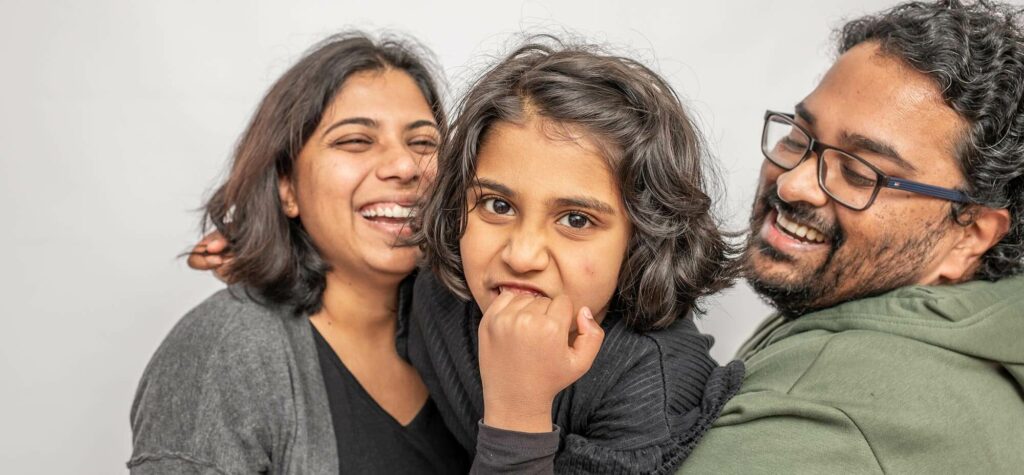Autism Awareness Month: Every April, the world celebrates World Autism Month, beginning with the United Nations-sanctioned World Autism Awareness Day on April 2. This year marks the 16th annual World Autism Awareness Day.

Autism is complex and presents differently in every single person who is diagnosed with it. Every person on the spectrum will have their own strengths and challenges, and these can change in intensity throughout their lives, which is why an informed understanding of autism and how it can present is so important.
Although autism affects approximately 1 in 70 people in Australia, misinformation and stereotypes about it remain all too common. As a result, identifying and supporting someone with autism, particularly in a young child who may not be able to articulate their emotions and experiences, can be difficult. It is important to understand the signs of autism in infants and young children, and how early intervention can enable a child to access potentially life-changing therapies that empower them and the people who love and care for them.
Signs of autism
Currently, autism is diagnosed by observing an individual’s behaviour across two categories: social interaction and communication and restricted and repetitive patterns of behaviours, interests, or activities. A child needs to demonstrate difficulties in both areas that affect their family, social and/or school live to obtain an autism diagnosis.
When a child receives an autism diagnosis, they will be given a severity level, which indicates how much support they need. This ranges from Level 1 to Level 3, with Level 3 requiring the most support:

Early childhood
Although many of the signs of autism are also displayed by children not on the spectrum, a child with autism will typically display these signs more frequently and intensely. Here are some of the behaviours that could indicate a child has autism according to the different stages of their development:
12 months
- Doesn’t acknowledge new faces or is frightened of them.
- Doesn’t smile, laugh, babble or use words.
- Doesn’t use gestures like waving or pointing.
- Doesn’t turn their head to locate sounds or respond to loud noises.
- Doesn’t crawl and cannot stand even when supported.
- Doesn’t push down on legs when their feet are placed on a firm surface.
- Doesn’t show affection to their primary caregiver and dislikes being cuddled.
- Has difficulty bringing objects to their mouth.
24 months
- Wasn’t able to walk by eighteen months and can only walk on their toes.
- Doesn’t speak or imitate actions and cannot follow simple instructions.
- Doesn’t appear to know the function of common household objects such as the telephone by 15 months.
- Can’t push a wheeled toy.
36 months
- Has very limited speech, doesn’t use short phrases.
- Has difficulty understanding simple instructions and manipulating small objects.
- Has difficulty separating from mother or primary caregiver.
- Has little interest in other children and ‘make-believe’ play.
- Frequently falls and has difficulty with stairs.

Preschool
Here are some signs of autism in preschool-aged children:
| Social communication signs | Behavioural signs |
| Doesn’t point to or share observations and experiences with others.Doesn’t look directly at other people in a social way; lacks eye contact. Absence of speech or unusual speech patterns (repetition of words and phrases and failure to use pronouns like ‘I,’ ‘me,’ and ‘you’ correctly).Unusual responses to other people, including a strong preference for familiar people, no desire to be cuddled and treating people as objects rather than a source of comfort. Avoidance of social situations, preferring to be alone. Limited development of play activities, particularly imaginative play.Constant crying or an unusual absence of crying. | Marked repetitive movements such as hand shaking or flapping, prolonged rocking or spinning of objects.Obsessive interest in certain toys or objects while ignoring others.Extreme resistance to changes in their environment or routine.Resistance to solid foods and a variety of foods in their diet.Extreme distress due to certain noises or busy public places, such as shopping centres.Toilet training difficulties.Sleeping problems. |
Primary school
A child with Level 2 or 3 autism is usually diagnosed between two or three years of age or sometimes younger as it is more apparent that they are not meeting their developmental milestones. However, a child with Level 1 autism may not be diagnosed until their school years. Here are some signs of autism in primary-school-aged children:
- Issues with conversation, including dominating conversations with their favourite topic or struggling to take turns.
- Difficulty interpreting the non-verbal communication of peers and adults.
- Unusual speech patterns, including a monotonous tone or an old-fashioned way of talking.
- Seeking solitude due to time with others being stressful and exhausting.
- Being very strict with following rules at school, in sport or in games.
- Difficulty reading social cues and the unwritten rules of friendship.
- Unusual interest and obsessions and no breadth of interests.
- Unusual physical movements such as touching, biting, rocking or finger-flicking.
- Sensory issues, including a heightened or lacking response to the five senses.
- Issues adjusting to expected routine changes without becoming very upset, a dependence on routines for security.
- Having few or no real friends.
- Aggression as a means of avoiding overwhelming situations.
- Anxiety, particularly in older primary students transitioning into teenager years.
Gender differences
It was once believed that for every four autistic boys, there was one autistic girl. However, this research has been proved outdated, with the actual figure closer to 2:1. Unfortunately, a lack of understanding of the gender differences in autism means many girls are often misdiagnosed or miss out on a diagnosis altogether. Girls are also more likely to ‘mask’ behaviours, meaning they hide their autistic traits, making them harder to identify.
Here are some of the common signs of autism in girls:
- A tendency to ‘mimic’ others, especially peers, in social situations to blend in.
- A strong imagination with a desire to escape into worlds of nature and fiction.
- Intense special interest that may be mainstream and appropriate (e.g., animals, music, art or literature).
- Little to no interest in playing cooperatively with female peers (may want to dictate all the rules or prefer to play alone to maintain control).
It’s important to keep in mind that although girls with autism may have less restricted or repetitive behaviours, better social and language skills, and a stronger desire to talk about their feelings, it doesn’t mean they require any less support. They may simply be able to ‘mask’ or conceal their symptoms and struggles more effectively, which can cause bigger issues when left unchecked.


What next?
Although autism can be complex, learning to understand its signs and impacts on children can help you to work more effectively with them and provide them with vital support. You can access more information about the signs of autism and the support options available for autistic people and those that care for and work with them at www.autismawareness.com.au
If a child you know has recently received an autism diagnosis, or is in the process of going through an assessment, visit Autism: What Next? www.autismwhatnext.com.au This website provides a comprehensive, evidence-based toolkit to help navigate the first year following an autism diagnosis.

Sources
Signs of autism in children
Understanding autism
Gender differences
Early intervention









